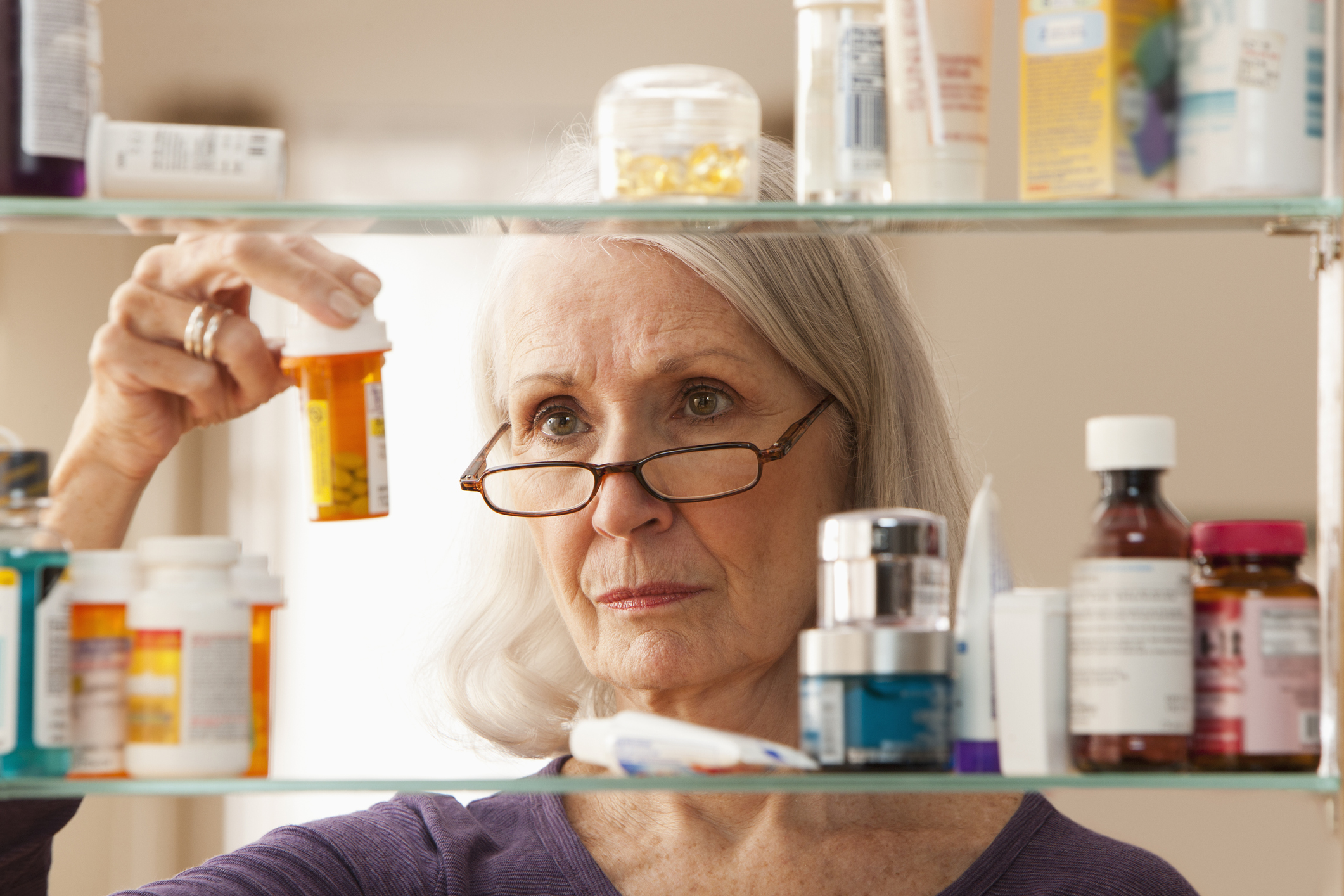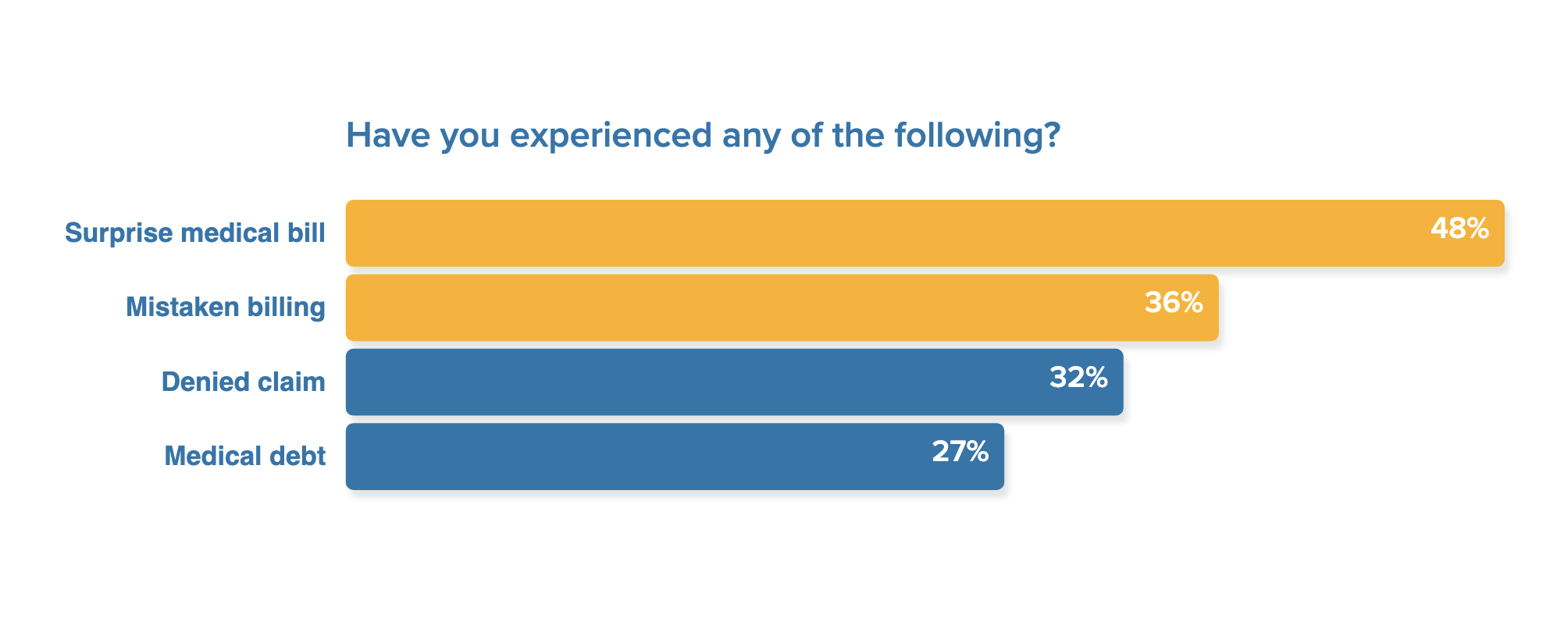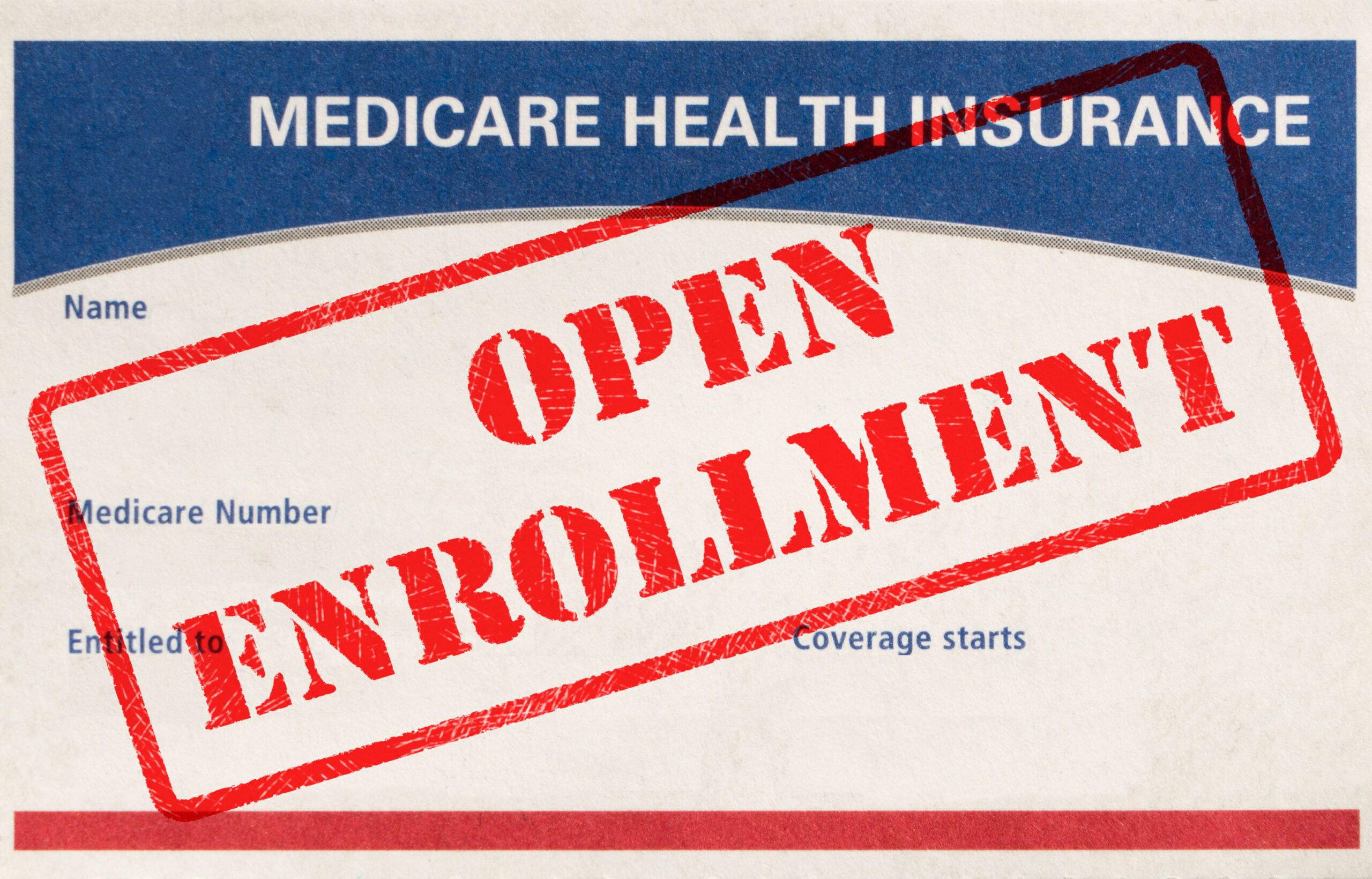
3 in 10 Americans who take prescriptions have difficulty paying for food or housing.
Key Findings
4 in 10 prescription medication users are concerned that drug spending in their household could lead to bankruptcy or debt.
Among Medicare Part D beneficiaries, the number of concerned respondents rises to 5 in 10.
3 in 10 prescription medication users say their drug spending climbed in the past year.
3 in 10 had difficulty paying for food or housing in the past year due to the high cost of drugs.
To lower costs, 4 in 10 think the government should first regulate prescription prices.
6 in 10 mail-order pharmacy users say mail-order pharmacies help them adhere to medications.
HealthCare.com’s new pharmacy survey shows 4 in 10 are concerned that drug spending in their household could lead to bankruptcy or debt.
3 in 10 say their drug spending rose.
And 3 in 10 had difficulty paying for food or housing in the past year due to the high cost of drugs.
To lower costs, 4 in 10 think the government should first regulate prescription prices.
Scroll down for the full results of HealthCare.com’s Prescription Medication and Mail-Order Pharmacy Survey 2022.
Prescription Medication and Mail-Order Pharmacy Survey
More than 4 in 10 Americans (44%) who take prescription drugs are concerned that medication spending in their household could lead to bankruptcy or debt.
27% say they are somewhat concerned, and 17% very concerned.
Among the 48 million mostly elderly beneficiaries of Medicare’s Part D drug coverage, the number of concerned respondents rises to 49%.
HealthCare.com polled 1,002 U.S. adults who have taken prescription drugs to assess their experiences with cost and coverage, and their views of fast-emerging mail-order pharmacies.
By far the greatest number of respondents (65%) take prescriptions every day.
13% take prescription medications less than once a month, 9% a few times a week, 5% once a month, 4% a few times a month, and 4% about once a week.
Challenged to Afford Food, Housing
3 in 10 prescription drug users (29%) say they had difficulty paying for food or housing in the past year due to the high cost of prescription medications.
Among Medicare Part D beneficiaries, the number rose to 34%.
3 in 10 (33%) pollees say their spending on prescription medications climbed in the past year. Just 7% said it had declined.
For Medicare Part D beneficiaries, those who spent more on drugs in the past year surpasses 36% of the group population.
Among 7 options provided for saving on prescriptions, the top 3 ways people save on drugs are: go generic (50%), use discount programs (30%), and opt for a 90-day supply (30%).
In what ways do you try to save on prescriptions? Please select all that apply.
Given the troubles Americans face affording their prescriptions, we asked participants if they have adopted any payment strategies.
With credit card debt surging nationwide, 21% say they have paid with overextended credit card debt, while 18% have borrowed from family. Only 16% have used a Health Savings Account (HSA) to pay for prescription medications.
By far the largest number of respondents (65%) say their prescription medications health insurance coverage stayed the same in the past year, compared to 16% who say it got worse and 14% who say it got better.
Part D beneficiaries are more likely to report improvement in their drug coverage. Among this group, just 13% say it got worse, while 20% say it got better.
“Most individuals on Medicare are on fixed incomes,” notes HealthCare.com Director of Pharmacy Apral Jones. “If there is an increase in their cost of meds, it has a direct effect. People should educate themselves on generics and discount programs, and buy larger supplies of medications to cut spending as much as possible.”
Seeking to Regulate Prescription Drug Prices
We also asked pollees what they think the U.S. government should do first to lower prescription medication prices.
The greatest percentage of respondents (40%) think the government should first regulate prescription prices in general.
This was followed by allowing Medicare to negotiate lower prices with pharmaceutical companies (34%).
Another 15% say Americans should first be allowed to buy cheaper Canadian medications, while 11% say the government should create more transparency on prescription medication prices.
Hope Mail-Order Pharmacies Deliver Price Improvements
Exactly one-third of Americans (33%) who have used prescription medications think mail-order pharmacies will help to reduce prices for prescriptions.
Mail-order pharmacies are drugstores that operate over the Internet or phone and send orders to customers.
Recently they have become an increasingly popular delivery method for prescription drugs.
While 70% of respondents fill their prescriptions at traditional retail pharmacies, 13% of prescription medication users now fill their scripts at mail-order pharmacies (129 out of 1,002 total respondents).
Among those who haven’t used a mail-order pharmacy, 56% say it’s because they like their current pharmacy, and 20% say they don’t trust mail-order pharmacies. 15% say they didn’t know they exist.
“The concern regarding trusting mail order pharmacies is understandable,” says Jones. “Many patients like face to face interaction with pharmacists and pharmacy technicians.”
45% of pollees think mail-order pharmacies are well regulated to ensure the safety of medications, compared to 19% who think they are not and 36% who are unsure.
The overwhelming number of respondents (64%) trust retail pharmacies the most, followed by pharmacies by their doctor’s office (22%), mail-order pharmacies (9%) and wholesale pharmacies (5%).
More than half of respondents (55%) say they go to retail pharmacies for the best prices, followed by mail-order pharmacies (16%), wholesale pharmacies (15%), and pharmacies by their doctor’s office (14%).
Despite the greater trust Americans place in traditional retail pharmacies compared to mail-order pharmacies, 61% of people who actually use mail-order pharmacies rate them better than traditional pharmacies.
50% of mail-order pharmacy users said their convenience and ease of use led them to give them a try.
Almost 3 in 10 (28%) of these mail-order pharmacy customers said the COVID-19 pandemic led them to start using mail-order pharmacies.
Meanwhile, 61% of mail-order shoppers say mail-order pharmacies help them adhere to their medication.
Has using a mail-order pharmacy helped you adhere to your medication?
In the past year, the greatest percentage, 45%, spent between $100-500. 32% spent less than $100 and 16% $500-1,000.
61% of mail-order pharmacy clients rate better than traditional pharmacies, compared to 18% who rate them worse than traditional pharmacies.
Despite this, users identified various problems with mail-order pharmacies. We asked respondents if they had experienced any of 7 issues.
Among them, the greatest number said their medication was late to arrive (27%), followed by poor customer service (17%), and technical problems with the website (12%).
Another 10% said their medication never arrived, and 8% said the wrong medication arrived. 5% each said the product was defective or the packaging was open. 46% hadn’t experienced any of the 7 issues.
Have you experienced any of the following with a mail-order pharmacy?
We also asked mail-order pharmacy users which of 7 aspects of mail-order pharmacies they find most convenient.
The largest number (64%) said the ability to get a 90-day supply, followed by the ability to consolidate prescriptions into one order (41%), and not having to walk to a pharmacy (38%).
Another 35% said not having to remember when to refill prescriptions, 31% said the ability to manage prescriptions online, 25% cited compliance packaging, and 18% said being able to get someone on the phone quickly.
Which aspects of mail-order pharmacies do you think are the most convenient?
Methodology
HealthCare.com conducted this survey on July 27, 2022, utilizing a SurveyMonkey Audience to poll a national sample of 1,002 U.S. adults over 18 who said they had taken prescription drugs. The margin of error for this survey is plus or minus 2.0 percentage points. For the subset of respondents who have used mail-order pharmacies, the margin of error is plus or minus 8.0 percentage points. The sample was balanced for age, gender, and U.S. region according to the Census Bureau’s American Community Survey.




